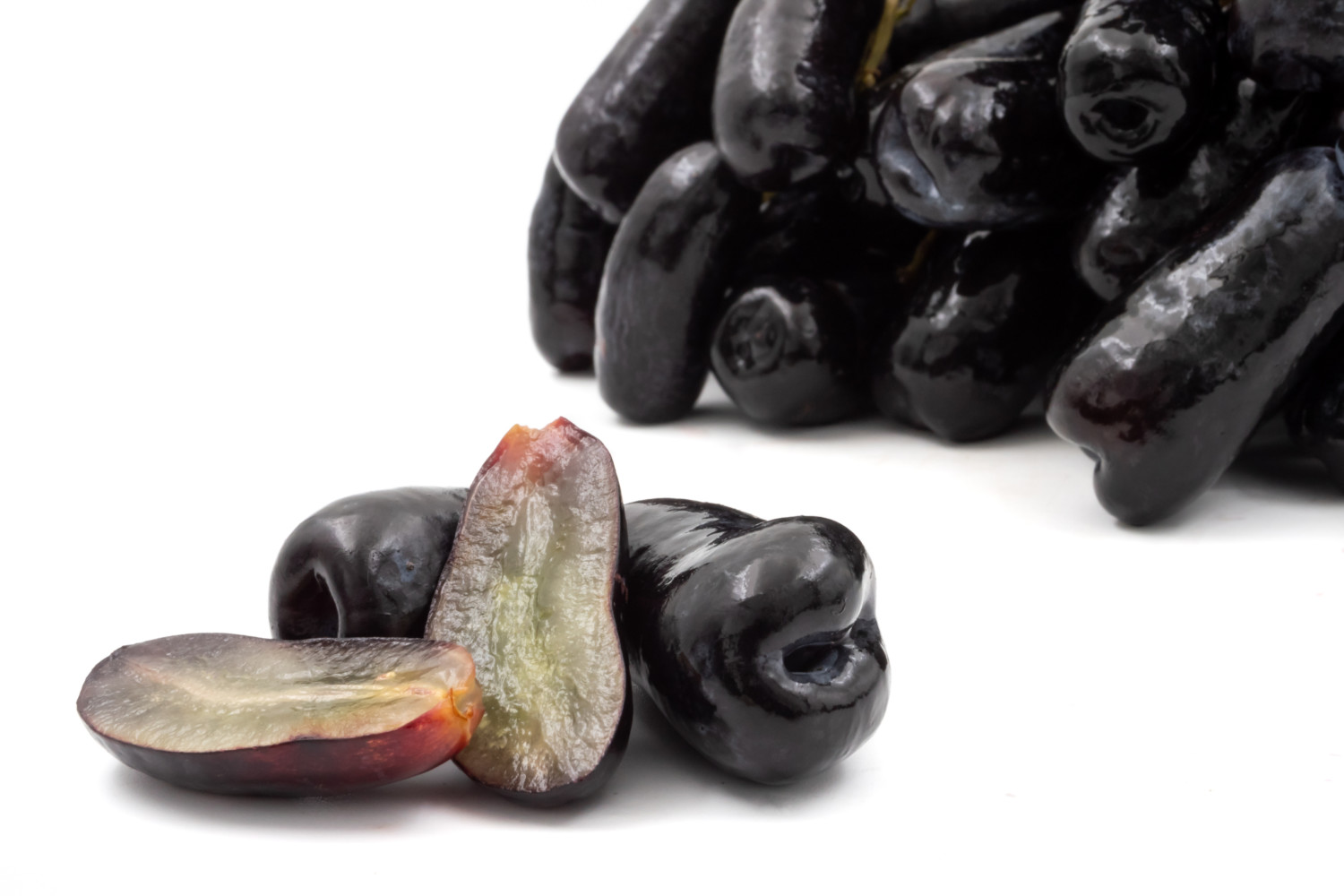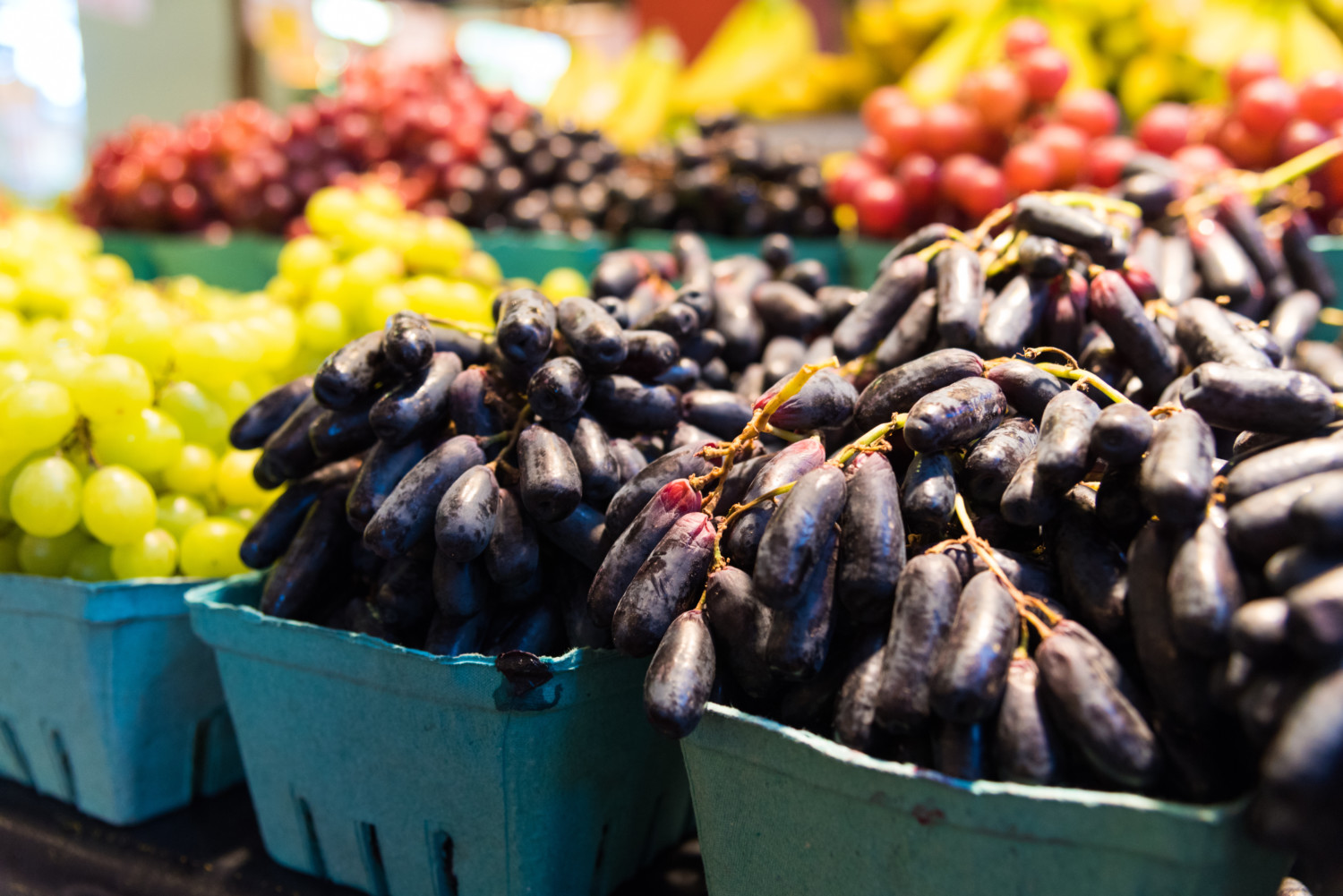You’re probably familiar with typical table grapes like Concord, Thompson or the trendy cotton candy grapes, but did you know there are between 8,000 and 10,000 other varieties of the fruit around the world? One type botanically classified as Vitis vinifera is more commonly known as moon drop grapes, and you might want to try them if you get the opportunity.
Moon Drop Grapes Appearance and Flavor
While “Moon Drop” is actually an umbrella brand that appears on the packaging at grocery stores, the grape you’ll primarily see under this umbrella is the grape trademarked as the “Sweet Sapphire.”
Moon Drops and other Sweet Sapphire grapes are unique due to their shape and color. The medium-to-large grapes are about 1 1/2 inches long and have an elongated cylinder shape. The grapes’ skin is dark purple, sometimes appearing black, with a blue-gray bloom covering them and a distinctive dimple on one end.
The flesh of these grapes is translucent purple-green. It is crisp and seedless with a firm consistency that allows the fruit to be snapped open using only your fingers.

As for taste, Moon Drop grapes are sweeter than standard black grape varieties with a more intense grape flavor. In addition, the grapes contain tannins that provide a balanced sweet-tart flavor, and their consistent texture makes them more palatable for people with sensory issues.
Health Benefits of Moon Drop Grapes
Like other common grapes, they are a good source of dietary fiber and nitrogenous compounds such as proteins and amino acids. In addition, they contain beneficial minerals such as iron, potassium, zinc, calcium and manganese and numerous vitamins such as vitamin A, vitamin C, vitamin K, vitamin B1 (thiamine), B2 (riboflavin), B3 (niacin), B6 (pyridoxine) and B9 (folate).
Moon drop grapes are also an excellent source of phytonutrients such as phenols, polyphenols, anthocyanins, resveratrol and flavonoids. These plant-based nutrients can help protect against chronic diseases, cancer and cardiovascular disease.
Finding and Enjoying Sweet Sapphire Grapes
Unlike other familiar grape varieties, the grapes aren’t available all year, nor in every store. In addition, because of their limited growing season, they are only available from mid-August to late October.

If you’re lucky enough to spot them, look for grapes that are firm in bunches without many loose grapes, as this can signify that they have started to turn. Then, you can add them to a fruit salad, freeze them, roast them or snack on them straight out of your hand.
Correction: An earlier version of this story identified the grape’s licensee as its creator. The grape was created by IFG.
This story originally appeared on Simplemost. Check out Simplemost for additional stories.


